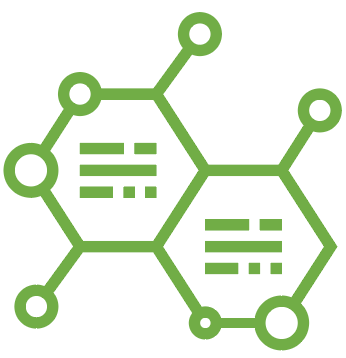INDUSTRY INSIGHTS:
Trends in TextilesSeveral recent studies indicate increased consumer interest in purchasing sustainably marketed products, even amidst the pandemici. THESIS 2020 data from 152 companies across 36 different categories of textiles spanning the industry from apparel to linens to footwear to see if there were types of textiles whose brands were taking relatively more action towards implementing sustainability practices. We found that, of the top five performing textile categories in THESIS, four were categories where we’d expect more consumer interest in product safety: baby’s footwear, children’s activewear, bedding, and children’s footwearii.
Across the analyzed categories the performance difference is most notable in key performance indicators related to the following:

Social
Hotspots

Responsible
Sourcing

Management of
Priority Chemicals
These trends correspond with similar movements happening throughout the textile industryiii. The public is increasingly paying closer attention to what is in and who is making the textiles they purchase. THESIS data also indicates that sustainable practices are less common in categories where safety may be less of a concern to consumers (e.g., accessories). These factors lead us to TSC’s working theory, which is that consumers and brands tend to focus their attention on “closer to home” textiles (i.e., those that touch their own or their family’s bodies).
Consumer Attention to Health Evident by Comparing Categories of Textiles
Shifts towards healthier lifestyles are key to understanding the connection between closer to home textiles and trends in creating more sustainable clothing. Take, for example, when organic food became more widely available in the early 2000s and with it an increased public awareness of the potential health and environmental impacts of pesticide use. By 2008 Nielsen reported “Organics have generated one of the largest sales increases (…) compared to sales four years ago”iv. Meanwhile, over in the textiles sector, by 2006 organic cotton conversion programs enabled small and medium enterprises to join large companies like Nike in making organic cotton available to consumersv. Within two years global organic cotton production jumped from just over 50,000 tons to 175,000 tons in 2008/09vi. It stands to reason that availability fuels desire, which then fuels more availability. If you were in a store and see organic clothing available, then it may make you question the conventional clothing you were planning to purchase. This snowball effect is naturally more prominent in some of our leading textiles like childrenswear where a healthy lifestyle is already a top priority for many consumers.

Currently we are seeing consumers pay more attention to activewear and home textiles and, subsequently, the sustainability of these products. While these shifting consumer trends had begun prior to the outbreak of COVID-19, the global pandemic has certainly emphasized prioritizing healthier lifestyles including a healthy home. Social impacts of clothing production have also come to the public forefront, potentially driven by the prominent social movements taking place globallyvii. Research by Accenture identified three major consumer trends for the post-pandemic market:
1. increasing focus on health, 2. a rise in conscious consumption, and 3. purchasing locally made productsviii.
![shutterstock_462371926 [Converted]-05](https://sustainabilityconsortium.org/wp-content/uploads/2021/07/shutterstock_462371926-Converted-05-1.png)
According to THESIS 2020 data, the following were the top and bottom five performing categories from the 152 companies assessing their sustainability performance across 36 different categories of textiles (100% = best). A brand’s attention to product safety is best captured by performance on THESIS’s Priority Chemical Management KPI. Dyes, dyeing accelerants, and other chemicals used in textile production can lead to adverse health effects for workers, residual contamination of products, consumer health hazards, release of harmful chemicals into the wastewater and ecosystems, and leaching from landfills upon product disposal. The categories where we might assume consumers have heightened safety concerns proved to be the top performers: Bedding and Baby Clothing.
Responsible Sourcing of Plant and Synthetic-Derived Materials is Challenging
Textiles are made from either plant or synthetic materials (or a blend). In both cases, supply chain risks exist. Cultivation of plant-derived materials (e.g., cotton, linen, and hemp) may create negative social and environmental impacts. Social impacts may include child labor use, forced labor, access to material and immaterial resources, fair income, and worker health and safety. Environmental impacts may include greenhouse gas emissions, water use, fertilizer runoff, and pesticide exposure. Conversely, production of synthetic (e.g., polyester, nylon, etc.) and semisynthetic (e.g., rayon, viscose, etc.) materials for use in textile manufacturing may lead to impacts from energy consumption, wastewater generation, resource use, worker exposure to chemicals and other hazards, as well as risk of labor rights issues.
Figure 2 to the right shows the relevant THESIS data from 2020. While some textile categories are seeing significant improvements in sourcing practices (e.g., Bedding’s synthetic material sourcing and Curtains’ plant-based material sourcing), 40% or more of material assessed was not verified to be covered by sustainable sourcing practices. The numbers are similar for both plant and synthetic materials.
Plant or synthetic materials are often sourced as commodities, where raw material or fabric is bought by the manufacturer on the open market from a distributor or trader. As a commodity supply generally lacking sustainability requirements or relevant certifications (except for organic certified cotton), brands may tend to source synthetics options based on pricing and availability rather than transparency. Without traceability, a brand has limited opportunity to influence the sustainable practices within its supply chain. Conversely, brands focused on sustainability and transparency will apply those goals to their whole portfolio and are well-positioned to drive better transparency in their material sourcing.
![shutterstock_462371926 [Converted]-03](https://sustainabilityconsortium.org/wp-content/uploads/2021/07/shutterstock_462371926-Converted-03.png)
Call to Action
The Intergovernmental Panel on Climate Change (IPCC), the United Nations body for assessing the science related to climate change, warned that we must halve greenhouse gas (GHG) emissions by 2030 to avoid the catastrophic impacts of climate change due to exceeding 1.5°C of global warming above pre-industrial temperaturesix.
![shutterstock_462371926 [Converted]-04](https://sustainabilityconsortium.org/wp-content/uploads/2021/07/shutterstock_462371926-Converted-04.png)
Higher-end clothing brands like Stella McCartney are responding with a recognition and reevaluation of their largest impacts – land use and GHG emissionsx. And, thanks in part to retailers using THESIS and launching programs like Walmart’s Project Gigaton, calls for action are being received by brands that have been focused on hotspots consumers may find easier to understand, like organic cotton and removing dyes and fragrances. Science-based organizations and initiatives like The Sustainability Consortium (TSC), the Sustainable Apparel Coalition, ZDHC, the Science Based Targets initiative (SBTi), and the Ellen MacArthur Foundation are helping these brands shift their focus to bigger impact hotspots like GHG reduction, water use, and wastewater treatment, all of which are imperative for sustainable textiles. Yet progress on most of these issues, particularly GHG emissions at manufacturing and water use in the supply chain has been slow (see Figure 3).

In summary, watch for trends in “closer to home” textiles; especially if they overlap with consumer desire for active, healthier lifestyles. The product safety and overall sustainability performance improvements we are seeing in categories like Baby Footwear, Children’s Activewear and Footwear, Men’s Activewear, and Bedding is likely to trickle into other categories as consumer awareness and demand increases. And while sourcing plant and synthetic-derived materials from farms and facilities with verifiable, comprehensive plans for environmental and social impacts remains an opportunity for improvement, the progress made from 2019-2020 is an indicator that companies are beginning to implement responsible sourcing policies and programs. Now it is time to think bigger and act more aggressively on climate change-related issues like greenhouse gas emissions, water use, and wastewater generationxi.
References
i – New York University Stern Center for Sustainable Business, “Sustainable Market Share Index”, accessed May 2021, https://www.stern.nyu.edu/experience-stern/about/departments-centers-initiatives/centers-of-research/center-sustainable-business/research/research-initiatives/csb-sustainable-market-share-index
ii – Maternity clothing brands also performed well overall and for priority chemicals management and plant-based sourcing KPIs, but are excluded from report due to the small number of suppliers in that category.
iii – Ellen MacArthur Foundation, “Make fashion circular”, accessed May 2021, https://www.ellenmacarthurfoundation.org/our-work/activities/make-fashion-circular
iv – Nielsen, “Organics trend overview in CPG industry: Is the organic sales explosion over?”, October 2008, https://www.nielsen.com/wp-content/uploads/sites/3/2019/04/organics-overview.pdf
v – International Trade Center, “The organic cotton market, Chapter 5 – Market segments – Organic cotton: an opportunity for trade”, accessed May 2021, https://www.intracen.org/The-organic-cotton-market/
vi – Townsend, Terry, “Cotton in the world economy”, Cotton Analytics, July 19, 2018, http://cottonanalytics.com/cotton-in-the-world-economy/
vii – Accenture, COVID-19 Consumer Research, “How COVID-19 will permanently change consumer behavior”, April 2020, https://www.accenture.com/us-en/insights/consumer-goods-services/coronavirus-consumer-behavior-research
viii – IPCC, “Summary for policymakers” In: Global Warming of 1.5°C. An IPCC Special Report on the impacts of global warming of 1.5°C above pre-industrial levels and related global greenhouse gas emission pathways, in the context of strengthening the global response to the threat of climate change, sustainable development, and efforts to eradicate poverty [Masson-Delmotte, V., P. Zhai, H.-O. Pörtner, D. Roberts, J. Skea, P.R. Shukla, A. Pirani, W. Moufouma-Okia, C. Péan, R. Pidcock, S. Connors, J.B.R. Matthews, Y. Chen, X. Zhou, M.I. Gomis, E. Lonnoy, T. Maycock, M. Tignor, and T. Waterfield (eds.)], World Meteorological Organization, Geneva, Switzerland, 32 pp., 2018, https://www.ipcc.ch/sr15/chapter/spm/
ix – Stella McCartney, “Stella McCartney eco impact report 2018/2019”, September 26, 2020, https://www.stellamccartney.com/us/en/stellas-world/stella-mccartney-eco-impact-report-2018-19.html
x – The Sustainability Consortium, Wastewater 101 Toolbox, 2020, https://wastewater.sustainabilityconsortium.org/
The Sustainability Consortium (TSC) is a global non-profit organization working to transform the consumer goods industry by partnering with leading companies to define, develop, and deliver sustainable products. The Sustainability Insight System, or THESIS, is the independent, science-based, holistic sustainability performance solution created by TSC that allows brands and manufacturers to understand the sustainability story of their products. In 2020, THESIS was used by over 1700 companies covering products representing over a trillion (U.S.) dollars in annual sales.
THESIS INDUSTRY INSIGHTS ARE A UNIQUE SOURCE FOR HOLISTIC DATA AND ANALYSES ABOUT THE CURRENT STATE OF PRODUCT SUSTAINABILITY.

